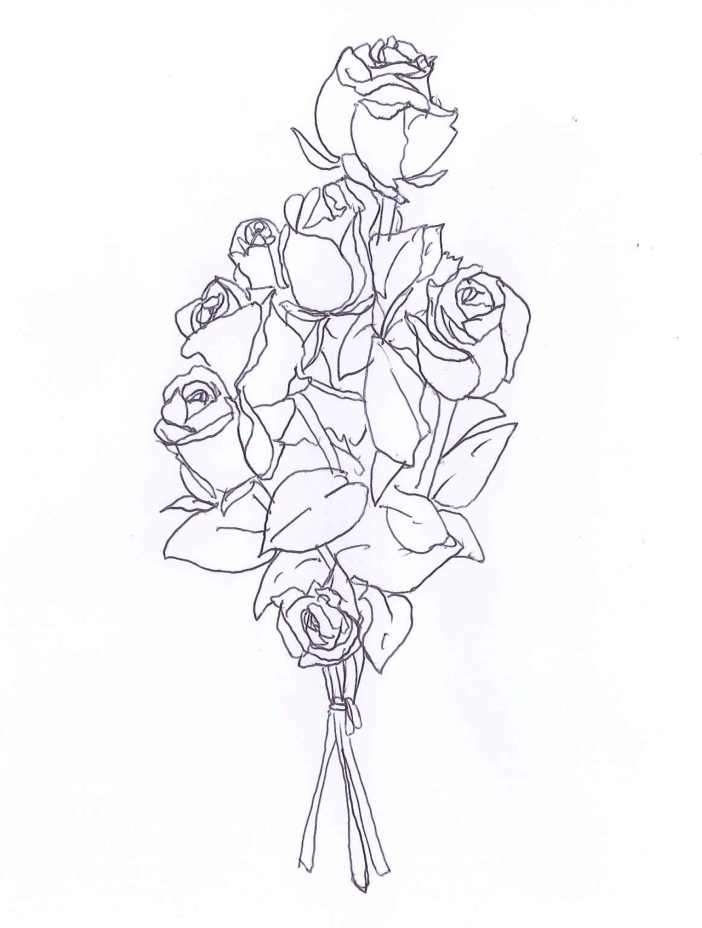Rowan County clerk Kim Davis has again grabbed headlines. As we learned after his historic visit to the United States, the Pontiff privately met with her and gave her two rosaries. Their sub rosa meeting raised many questions, including one for me: Why do we call it a rosary?

Rosary
When Catholics pray the rosary, they recite a structured series of prayers contemplating important events – or “mysteries” – in the life of Jesus and his mother, Mary. The Oxford English Dictionary (OED) attests this usage in 1531, though Catholic tradition originates the practice in a vision of Mary by Saint Dominic in 1214.
For most, rosary probably evokes its particular prayer beads. These help devotees keep count of the prayer sequence, thereby freeing their minds to meditate on those mysteries. The OED attests this transferred rosary by 1548.
An earlier citation of rosary provides important clues to the development of the word. The OED cites rosarie as early as 1387: a “coin made in imitation of the silver penny of Edward I (1272-1307) by European mints.” On one side of this counterfeit currency was a bust wearing a chaplet or garland, often made of flowers – especially roses. (Another counterfeit penny circulated in Ireland at this time was called a mitre, named for its imprint of this episcopal headgear.)
Prayer “garden”
Rosary derives from the Latin rosārium. In Classical Latin, the word names a “rose garden,” with its root, rosa, meaning “rose.” In Medieval Latin, rosārium also named a “garland” as well as a “series of prayers” or the very “string of beads” we associate the word with today. A kind of garland wreathing the head, a chaplet also refers to a particular section of the rosary along with other devotional prayers aided by beads.
So, why roses? Well, the OED records rosary used as a title for a “book of devotion,” especially including rosary prayers, in 1525. Medieval scholars note some important metaphors for art in the Middle Ages and antiquity. Writing, for instance, was likened to ploughing a field. Collecting poems or prayers, furthermore, was like cultivating a garden or arranging a bouquet. We see this in the etymology of the word anthology, which literally means “a gathering of flowers” in ancient Greek. Latin rendered this as a florilegium, meaning the same. So, a rosary is like a “garden” of prayers, as the Online Etymology Dictionary sums it up.
Of course, symbolic associations of roses in Catholicism certainly add strength to the connection between roses and Mary, prayers to whom constitute 53 of a rosary’s beads. Philologist Eric Partridge notes that Medieval Latin used rosārium for a “rose garland for crowning the Virgin.” The resemblance between a garland and a rosary – a string of beads does look like a string of flowers – may further strengthen the connection.
Today, many of us might have a different sort of rose in mind: Roseburg, home to a community college that was visited with a horrific mass shooting yesterday. This may leave many praying their rosaries, but we’re going to need a lot more than prayers to do anything about gun violence.
 m ∫ r ∫
m ∫ r ∫
Are you familiar with the story of Juan Diego, his vision, the maiden, and the cloak of roses? Interesting to see the symbols/stories cross cultures/countries. https://en.wikipedia.org/wiki/Our_Lady_of_Guadalupe
LikeLike
I was not familiar with that particular Marian apparition, but thanks for sharing it. Its roses certainly add yet further depth to the rose symbolism.
LikeLiked by 1 person
Some say it was used by the priests to convert locals in Latin America. Lady of Guadalupe as she is called is quite revered and celebrated as the patron saint of Mexico and the Americas.Quite a party in her honor in Dec. there. Pope Paul canonized Diego. The Lady plays an important role in Mexico’s nationalism and as a rallying point. Fascinating story. Always found the roses intriguing.
LikeLike
As a word nerd, I so enjoy your posts! I am delighted that you choose words in the news to explore. Three cheers!
LikeLike
Sara, thanks so much!
LikeLike
Very interesting and extremely well written. Thank you
LikeLike
Thanks!
LikeLike
Honestly, I loved your vocabulary! Great word choice and a great article.
LikeLike